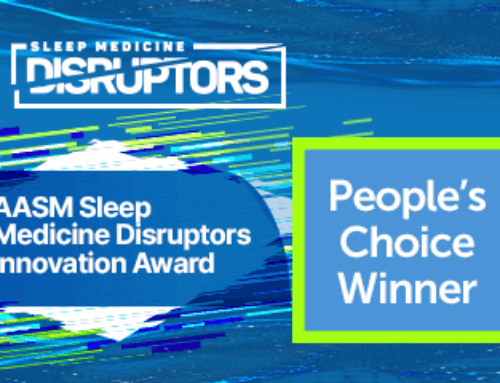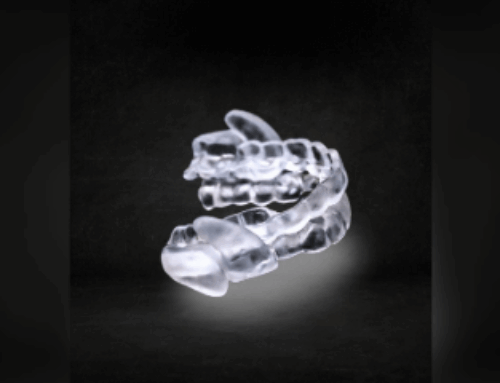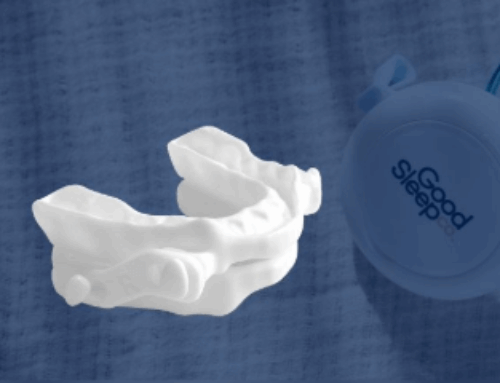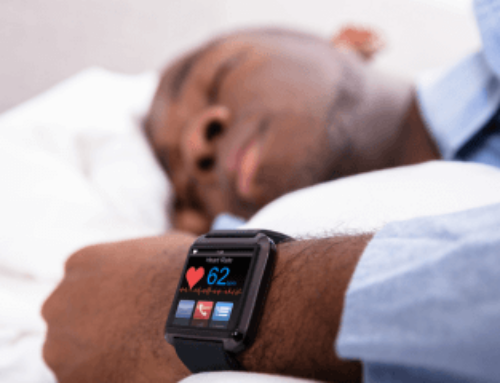By Pahnwat Tonya Taweesedt, MD
Unlike sleeping at home or in a hotel during a vacation, sleeping with polysomnography (PSG) equipment in a sleep lab might not be a pleasant experience for patients. Even though in-lab PSG is the gold standard for diagnosis of sleep-related breathing disorders (SRBD), the inconvenience, cost, and stress can make it an undesirable option. The demand for sleep studies is anticipated to surpass the availability of sleep labs and trained personnel, highlighting the growing emphasis on prioritizing health and wellness via sleep improvement. A home sleep apnea test (HSAT) provides more accessible options for SRBD diagnosis, particularly obstructive sleep apnea (OSA). Companies have introduced a variety of innovative HSAT devices aiming to improve accuracy and efficiency for over two decades. While consumer-grade sleep technologies are typically FDA-registered devices or lack regulatory support, HSAT technologies are medical-grade devices that have received FDA clearance or approval for use in clinical practice.
Traditional home sleep apnea tests: Basics and limitations
A traditional HSAT, referred to as a type III sleep study, typically includes airflow, respiratory effort, heart rate, and oxygen saturation. These channels offer important information with fewer wires compared to the in-lab PSG, resulting in high sensitivity and specificity for OSA diagnosis. Nonetheless, it may still be cumbersome due to the remaining cannulas, wires, and setup process. The newer models, such as the NOX-T3s and Falcon, incorporate Bluetooth technology while maintaining a high sensitivity and specificity for detecting moderate-to-severe OSA. The absence of an electroencephalogram (EEG) in a traditional HSAT device limits the ability to detect cortical arousals and wake time, necessitating the total recording time as a substitute for total sleep time, which may underestimate the apnea-hypopnea index (AHI).
New generations of home sleep apnea tests: Simplified setup and flexible monitoring options
The newer type II sleep study, Onera, is intended for the home and in-lab setting. Not only does it maintain multiple channels like in-lab PSG, but the Onera Sleep Test System also implements non-wire technology and shows a high correlation of AHI compared to in-lab PSG. This innovative, portable, patch-based device requires self-application in less than five minutes, resulting in a more streamlined process that enhances the overall at-home patient experience. DormoVision X, a wireless, self-applied, AI-powered sleep technology, received FDA clearance in December 2024. It features versatile capabilities that allow the device to be configured for type I, II, and III sleep studies and can be utilized for both single and multiple-night assessments.
Peripheral arterial tonometry: Trending and convenient approach to diagnosis
Peripheral arterial tonometry (PAT) technology has been approved by the FDA as an aid to OSA diagnosis since 2001. It enhances the patient experience by utilizing a smaller, budget-friendly device with only a few contact points. This technology employs photoplethysmography (PPG) to assess vasoconstriction and decreased blood volume in the peripheral vascular bed, which occurs in response to sympathetic activation triggered by respiratory events during sleep.
PPG data is usually derived from a finger in a single device, such as SleepImage, Belun Ring, Happy Ring, NightOwl, and TipTraQ. WatchPAT One, EnsoSleep PPG, and ANNE Sleep obtain PPG data from a finger, along with other physiological information from a chest sensor. Besides the finger, single-point-of-contact PPG-based HSATs can capture important physiological parameters from different parts of the body; for example, the SANSA device is placed on the chest and employs PAT and ECG, whereas the Somfit device is positioned on the forehead and collects PAT and EEG data.
EnsoSleep PPG, SleepImage, Belun Ring, Happy Ring, TipTraQ, and Somfit are reusable and cost-effective for the sleep clinic. On the contrary, disposable devices such as WatchPAT One, NightOwl, and SANSA may be preferable for those prioritizing reduced return time and sanitization process. In contrast to single-night use devices, multi-night use devices such as EnsoSleep PPG, NightOwl, TipTraQ, Belun Ring, Happy Ring, and Somfit may offer a more representative assessment of typical sleep behavior that has night-to-night variability. Moreover, Happy Ring goes a step further by offering 24/7 biometrics monitoring.
PPG-based HSATs have been validated through numerous studies and are commonly used in clinical settings. They exhibit strong sensitivity for diagnosing moderate-to-severe OSA, though their sensitivity is lower in mild and mild-to-moderate cases. Additionally, their overall specificity is not as robust. Therefore, when clinical findings suggest OSA, negative results should not deter further investigation, and a follow-up in-lab PSG should be conducted.
Home sleep apnea tests for children: Restricted choices and challenges
Over the past decade, there have been only a few HSATs available for children, primarily traditional HSATs like the NOX T3, followed by the later launch of the NOX T3S. The WatchPAT is approved for children aged 12 years and older, while SleepImage and DormoVision X received FDA clearance for individuals starting at 2 and 6 years of age, respectively. However, the lack of CO2 monitoring and arousal identification may diminish accuracy. Despite there being sparse literature for the use of HSAT in children, a recent study indicated a significant overestimation of the AHI in adolescents with obesity. Thus, in-lab PSG provides the most comprehensive results in children, and HSAT may be considered as an alternative if PSG is unsuccessful.
Non-traditional sensor technologies
In the evolving landscape of HSAT technology, non-PPG-based wireless devices focusing on various physiological parameters have emerged. The AcuPebble SA100, a proprietary acoustic neck sensor, offers high accuracy in diagnosing moderate-to-severe OSA. Its upgraded version, the AcuPebble OX100, includes a finger-worn pulse oximeter for enhanced monitoring capabilities. Sunrise, a chin sensor, measures mandibular jaw movements and is validated against esophageal pressure to evaluate respiratory effort. Wesper employs two wearable biosensor patches — one on the chest and the other on the abdomen — to monitor thoracoabdominal movement and assess respiratory effort-derived flow. Though these respiratory effort detection features in Sunrise and Wesper can facilitate the diagnosis of central sleep apnea (CSA), further validation is still needed.
Conclusion
HSAT devices offer significant improvements in portability, yet they still face limitations, particularly in complex conditions such as hypoventilation and CSA. While the advancement of HSAT technologies equips clinicians with valuable tools for accurately diagnosing OSA, the age, co-morbidities, feasibility, severity, and criteria of OSA detection (AHI 3% vs 4%) should be considered. Beyond diagnosis, HSAT plays a valuable role in evaluating OSA treatment outcomes. It is essential to thoroughly understand the features, indications, and limitations of new HSAT devices to maximize their potential in clinical practice.
For concise, at-a-glance summaries of trending consumer and clinical sleep devices and apps, visit the AASM #SleepTechnology directory, an exclusive member resource updated regularly with new listings.
The AASM and authors have no affiliation with any products and do not endorse any products described here.
About the author
Dr. Pahnwat Taweesedt is a board-certified, fellowship-trained sleep specialist at Stanford Health Care. She is also a clinical instructor in the Department of Psychiatry and Behavioral Sciences, Division of Sleep Medicine at Stanford University School of Medicine. She is a member of the AASM Emerging Technology Committee.





